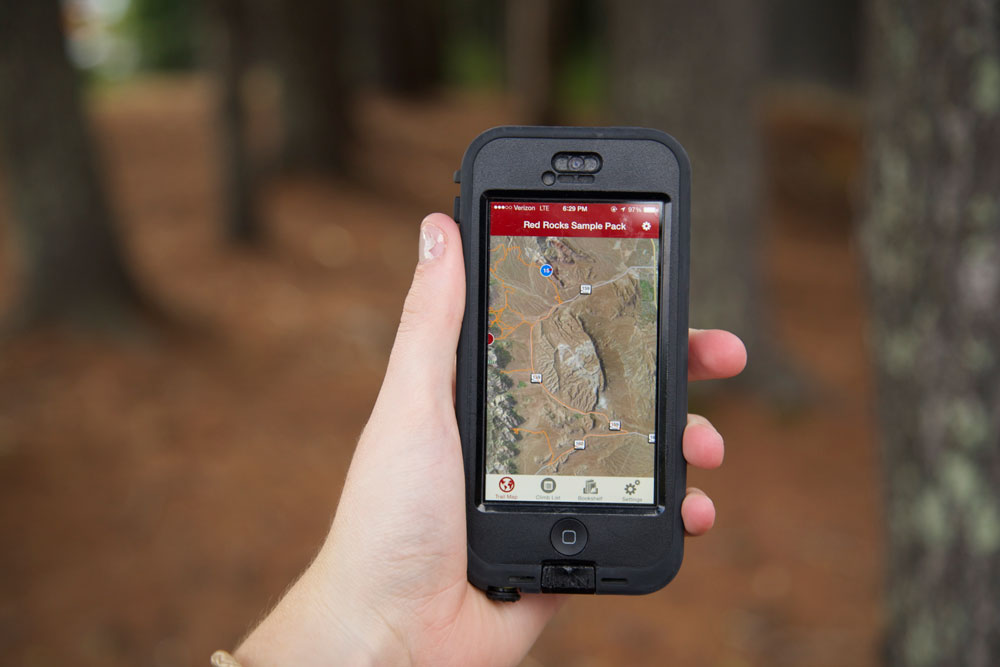An Appalachian Studies graduate student has created a mobile guidebook of Grayson Highlands State Park for Rakkup, a mobile phone app that sells climbing guidebooks for various locations across the country.
Aaron Parlier, the creator of the guidebook, said Rakkup is available for download through the iTunes Store and Google Play for Android operating system smartphones. Rakkup is a Seattle-based company founded by two climbers, Rob Price and Todd Kutzke, who both have previously worked for Microsoft. Parlier’s mobile guidebook is currently available on the app.

Grayson Highlands State Park is located in Virginia, not far across the northern border of North Carolina and spans over 4,000 acres.
Parlier said after serving as a paratrooper in Fort Bragg, he went to Virginia Tech University to go to school and realized there was very limited information to be found about climbing and bouldering in southwest Virginia.
“I ventured out to Grayson Highlands, finding several amazing boulders on my first visit, and afterward started exploring, climbing and documenting what I found,” Parlier said. “Since climbing, especially bouldering, is becoming more popular and widespread and since GHSP is the best bouldering area in Virginia, it made sense to me that GHSP should be the first bouldering area on the East Coast to have this cool new mobile guidebook app.”
The mobile guidebooks available on Rakkup are similar to physical guidebooks, but include even more features for users.
“The mobile guidebooks offer the same content as physical, printed guidebooks, but also have turn-by-turn GPS trail navigation software which can be a huge help when trying to find obscure climbing areas in parks, National Forests or Wilderness Areas,” Parlier said. “The Rakkup mobile guidebook app offers full color photos, topographic maps and text content from the printed guide.”
Parlier had previously written a printed guidebook of the Grayson Highlands State Park, which took him two years to write. He said the app was easier to create, but had different challenges in its making, including having to visit parts of the park that had not previously been explored often.
“It was particularly challenging as I was simultaneously exploring and finding new areas and boulders while writing the guide,” he said. “When you find a boulder that has never been climbed before, you name it, then every climb on the boulder gets a name and a grade reflecting its difficulty.”
Parlier said sometimes he would have to climb one boulder around 20 times, a very time consuming process. He worked on compiling all of this data for about four months this summer.
“My job was mostly the footwork. Rakkup relies on local authors and experts of the climbing areas to send detailed GPS waypoints of every boulder in the guidebook and to create GPS trail maps for the areas involved,” he said. “I would download everything I compiled to the Rakkup software, sync that information to the data already listed for the areas and climbs, connect trails with other trails and roadways and field test the turn-by-turn GPS tracks once they were in place.”
What makes the mobile version of the guidebook special, Parlier said, is that it is a great utility to climbers.
“Even without cell service, the GPS navigation will guide you to within 10 feet of any boulder in the guidebook,” he said. “The navigation system shows where you are on the trail; it features a compass arrow guide and lists the distance to the boulder or area.”
Dan Brayack, the publisher and photographer for the print version of Parlier’s guidebook, who also contributed to the mobile version by providing digital images, said he had to redo a lot of his work for the mobile version.
“I went through and re-did all my maps so they matched the size and color of the Rakkup format,” Brayack said. “Then I uploaded all my maps and then tagged all the maps with the route information.”
Brayack said the biggest challenge was getting used to the format for uploading the data and also routing the locations.
Once trails become more established in the new climbing areas of the park, Parlier said he and Brayack hope to release a second edition, both available in print and mobile versions.
Currently the guidebook can be bought on Rakkup for $21.99 or it can be bought for three-year span for $10.99. Parlier said this is about to change.
“This fall the options will be ‘buy for life’ and ‘rent for two months,’” Parlier said. “The higher price for buying the app for life reflects that the content will be continuously updated as new climbs are documented, new areas are found and as updates to the park in general come about.”
Story: Nicole Caporaso, News Reporter
Photo: Carson Hager, Photographer
